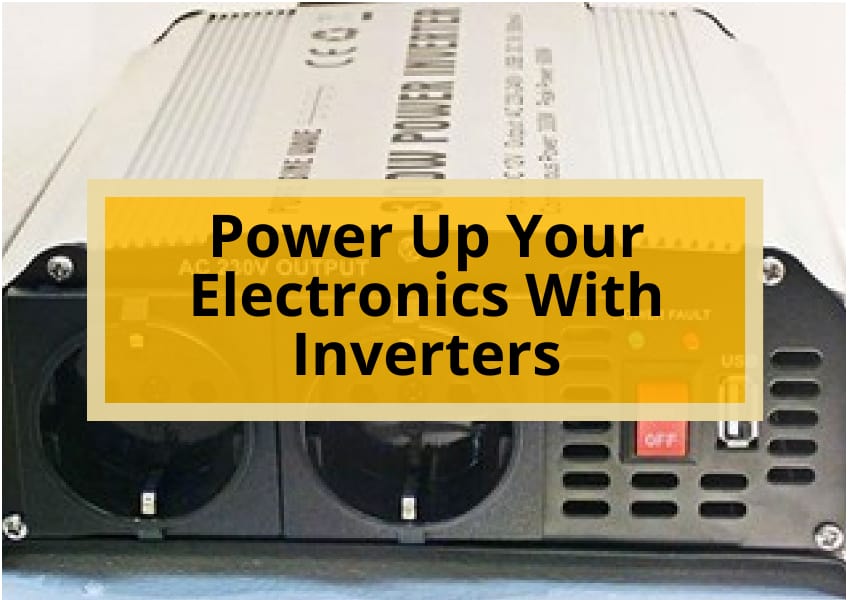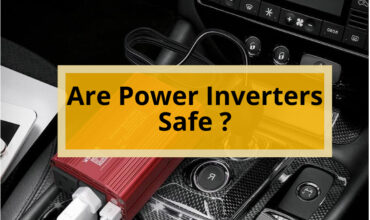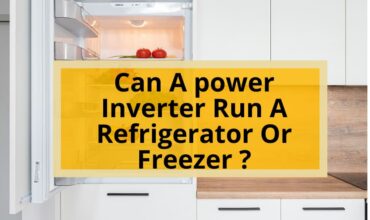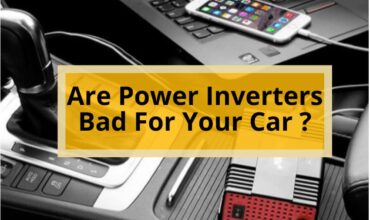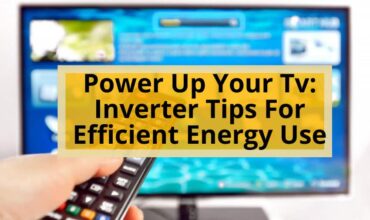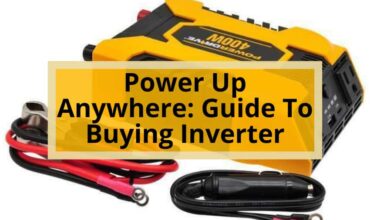In today’s world, electronics have become an integral part of our lives, and they require a reliable source of power to function efficiently. Power inverters are devices that can convert DC power into standard AC power, and they have become increasingly popular as a solution to powering electronics in a variety of settings.
Whether it’s for household appliances, mobile devices, or electronic equipment, inverters have become an essential tool for powering up our electronics with ease. Inverters come in two types, True Sine Wave and Modified Sine Wave, each with its own unique functions and benefits.
It’s important to understand the differences between them and choose the right one for your needs. In this article, we will explore the various types, sizes, and ratings of inverters, as well as their sources and references, to help you understand the technical aspects of inverters and how they can power up your electronics.
With this knowledge, you can make informed decisions when choosing the right inverter for your specific needs, ensuring that your electronics receive the reliable power they need to function properly.
What is an Inverter?
An inverter is a device that converts DC power into AC power, which can be sourced from batteries, generators, solar panels, or other sources of power supply. There are two types of power inverters: True Sine Wave and Modified Sine Wave.
True Sine Wave replicates or improves the quality of power provided by main power grids and is recommended for high energy-consuming electronic gadgets and equipment. On the other hand, Modified Sine Wave is cheaper and can run fewer or selected household appliances and fixtures.
One of the advantages of using an inverter is that it provides an alternative source of power when the main power supply is not available, making it useful for camping, road trips, and other outdoor activities. In addition, inverters can provide backup power during power outages, which can last for several hours or even days.
However, one of the disadvantages of using an inverter is that it can be expensive, especially if you need a high-capacity inverter to power multiple appliances. Moreover, not all appliances and equipment can be powered by an inverter, and some may require special adapters or converters.
Common applications of inverters include powering laptops, TVs, refrigerators, and other electronic devices and appliances.

Types and Functions
There are two types of power inverters available in the market, namely True Sine Wave and Modified Sine Wave. True Sine Wave inverters replicate or improve the quality of power provided by the main power grids and are recommended for high energy-consuming electronic gadgets and equipment. On the other hand, Modified Sine Wave inverters are cheaper and can run fewer or selected household appliances and fixtures.
When considering inverter installation, it is important to identify the power backup options that will work best for the specific needs and requirements of the household. This can include factors such as the size of the inverter, the power rating, and the source of power supply. By understanding the differences between True Sine Wave and Modified Sine Wave inverters, homeowners can make an informed decision on which type of inverter will best suit their needs.
also read : Power Up Your Home: Sizing Guide For Generators
Sizes and Ratings
Inverter sizes and ratings play a crucial role in determining the efficiency and reliability of a household’s power backup system, making it imperative to carefully select and evaluate the appropriate specifications based on specific power requirements and usage needs.
The size of an inverter is determined by the maximum amount of power it can provide, ranging from 100 watts to over 5000 watts. It is important to choose the right inverter size to avoid overloading or underutilizing the system, which can result in inefficiency and damage to the inverter and appliances.
In addition to size, inverter ratings are also important considerations. The three basic ratings are surge rating, continuous rating, and 30-minute rating. Surge rating is required for appliances that require a high surge of power to start functioning. Continuous rating describes the amount of power that can be utilized without causing the inverter to overheat and shut down. The 30-minute rating may be adequate for occasional use of high energy-consuming equipment or appliances.
By carefully evaluating and selecting the appropriate inverter size and rating, households can ensure the efficiency and reliability of their power backup system.
Frequently Asked Questions
Are there any safety precautions that need to be taken when using an inverter?
The importance of installing safety precautions when using an inverter cannot be overstated. Users must follow manufacturer’s instructions, avoid overloading the inverter, use appropriate cables, and store the inverter in a cool, dry place.
Can an inverter be used to power sensitive medical equipment?
Inverter compatibility with medical devices depends on the power stability and the type of inverter used. True Sine Wave inverters are recommended for sensitive medical equipment as they provide a high-quality power supply similar to main power grids.
How long does an inverter typically last?
The lifespan of an inverter can vary depending on usage and maintenance, but typically ranges from 5 to 15 years. Regular maintenance, such as cleaning and checking connections, can prolong the lifespan of an inverter.
Is it possible to connect multiple inverters together to increase power output?
Multiple inverters can be connected in parallel connection to increase power output. This method involves equalizing the voltage levels of each inverter and balancing the power distribution to avoid overloading and overheating.
How do you choose the right size inverter for your needs?
Inverter sizing depends on the power requirements of the appliances to be powered. Surge, continuous, and 30-minute ratings must be considered. Inaccurate sizing can lead to overheating, shutdown, or damage to the inverter.
